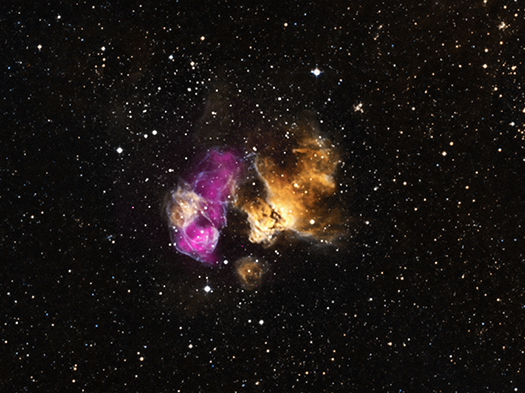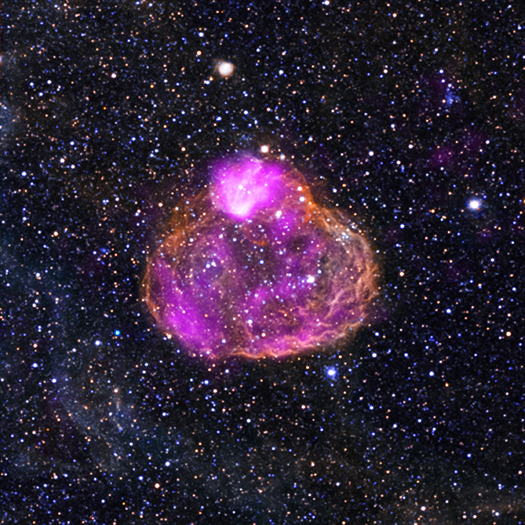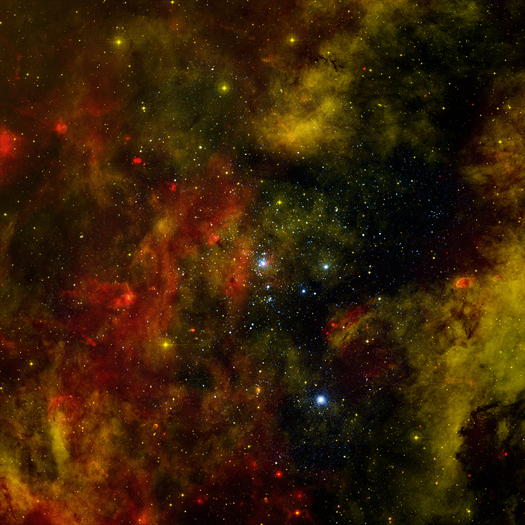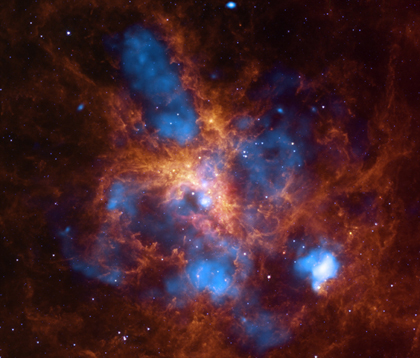Normal Stars & Star Clusters
Core-Halo Age Gradients in Young Stellar Clusters
We are delighted to welcome a trio of guest bloggers to discuss their work related to the newest Chandra press release on star clusters and star formation. Konstantin Getman, Eric Feigelson, and Michael Kuhn are colleagues at Penn State University and are all involved in the Massive Young Star-Forming Complex Study in Infrared and X-ray (MYStIX) project led from that institution.
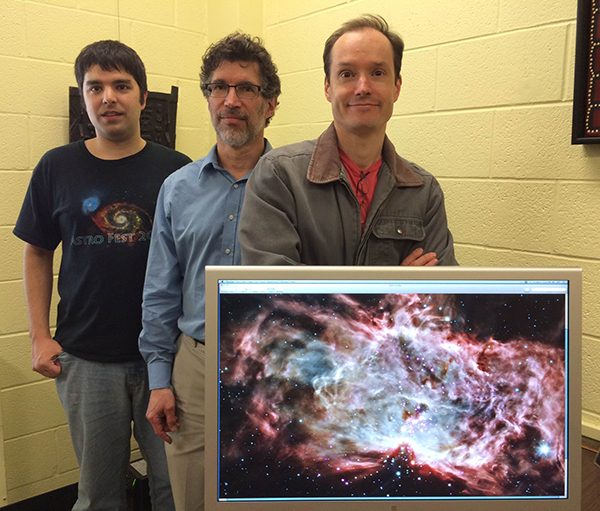
Figure 1: From left to right, Michael Kuhn, Eric Feigelson, and Konstantin Getman.
NASA's Chandra Delivers New Insight into Formation of Star Clusters
Stars are often born in clusters, in giant clouds of gas and dust. Astronomers have studied two star clusters using NASA's Chandra X-ray Observatory and infrared telescopes and the results show that the simplest ideas for the birth of these clusters cannot work, as described in our latest press release.
Hardy Star Survives Supernova Blast
When a massive star runs out fuel, it collapses and explodes as a supernova. Although these explosions are extremely powerful, it is possible for a companion star to endure the blast. A team of astronomers using NASA's Chandra X-ray Observatory and other telescopes has found evidence for one of these survivors.
X-Ray Whispers In A Noisy Pub
We are delighted to welcome Katja Poppenhaeger as a guest blogger today. Katja is the first author of a new paper describing the first exoplanet transit ever seen in X-rays, the subject of our latest press release. Katja studied physics at Frankfurt University in Germany, followed by a PhD in astrophysics at Hamburg Observatory in Germany, before coming to Harvard-Smithsonian Center for Astrophysics (CfA) as a postdoc.
Taken Under the "Wing" of the Small Magellanic Cloud
The Small Magellanic Cloud (SMC) is one of the Milky Way's closest galactic neighbors. Even though it is a small, or so-called dwarf galaxy, the SMC is so bright that it is visible to the unaided eye from the Southern Hemisphere and near the equator. Many navigators, including Ferdinand Magellan who lends his name to the SMC, used it to help find their way across the oceans.
Stellar Effervescence on Display
This composite image shows the superbubble DEM L50 (a.k.a. N186) located in the Large Magellanic Cloud about 160,000 light years from Earth. Superbubbles are found in regions where massive stars have formed in the last few million years. The massive stars produce intense radiation, expel matter at high speeds, and race through their evolution to explode as supernovas . The winds and supernova shock waves carve out huge cavities called superbubbles in the surrounding gas.
Probing a Nearby Stellar Cradle
The Milky Way and other galaxies in the universe harbor many young star clusters and associations that each contain hundreds to thousands of hot, massive, young stars known as O and B stars. The star cluster Cygnus OB2 contains more than 60 O-type stars and about a thousand B-type stars. At a relatively nearby distance to Earth of about 5,000 light years, Cygnus OB2 is the closest massive cluster. Deep observations with NASA's Chandra X-ray Observatory of Cygnus OB2 have been used to detect the X-ray emission from the hot outer atmospheres, or coronas, of young stars in the cluster and to probe how these great star factories form and evolve. About 1,700 X-ray sources were detected, including about 1,450 thought to be stars in the cluster. In this image, X-rays from Chandra (blue) have been combined with infrared data from NASA's Spitzer Space Telescope (red) and optical data from the Isaac Newton Telescope (orange).
A Surprisingly Bright Superbubble
This composite image shows a superbubble in the Large Magellanic Cloud (LMC), a small satellite galaxy of the Milky Way, located about 160,000 light years from Earth. Many new stars, some of them very massive, are forming in the star cluster NGC 1929, which is embedded in the nebula N44. The massive stars produce intense radiation, expel matter at high speeds, and race through their evolution to explode as supernovas. The winds and supernova shock waves carve out huge cavities called superbubbles in the surrounding gas. X-rays from NASA's Chandra X-ray Observatory (blue) show hot regions created by these winds and shocks, while infrared data from NASA's Spitzer Space Telescope (red) outline where the dust and cooler gas are found. The optical light from the 2.2m Max-Planck-ESO telescope (yellow) in Chile shows where ultraviolet radiation from hot, young stars is causing gas in the nebula to glow.
A New View of the Tarantula Nebula
To celebrate its 22nd anniversary in orbit, the Hubble Space Telescope has released a dramatic new image of the star-forming region 30 Doradus, also known as the Tarantula Nebula because its glowing filaments resemble spider legs. A new image from all three of NASA's Great Observatories - Chandra, Hubble, and Spitzer - has also been created to mark the event.
30 Doradus and The Growing Tarantula Within
The star-forming region, 30 Doradus, is one of the largest located close to the Milky Way and is found in the neighboring galaxy Large Magellanic Cloud. About 2,400 massive stars in the center of 30 Doradus, also known as the Tarantula Nebula, are producing intense radiation and powerful winds as they blow off material.


